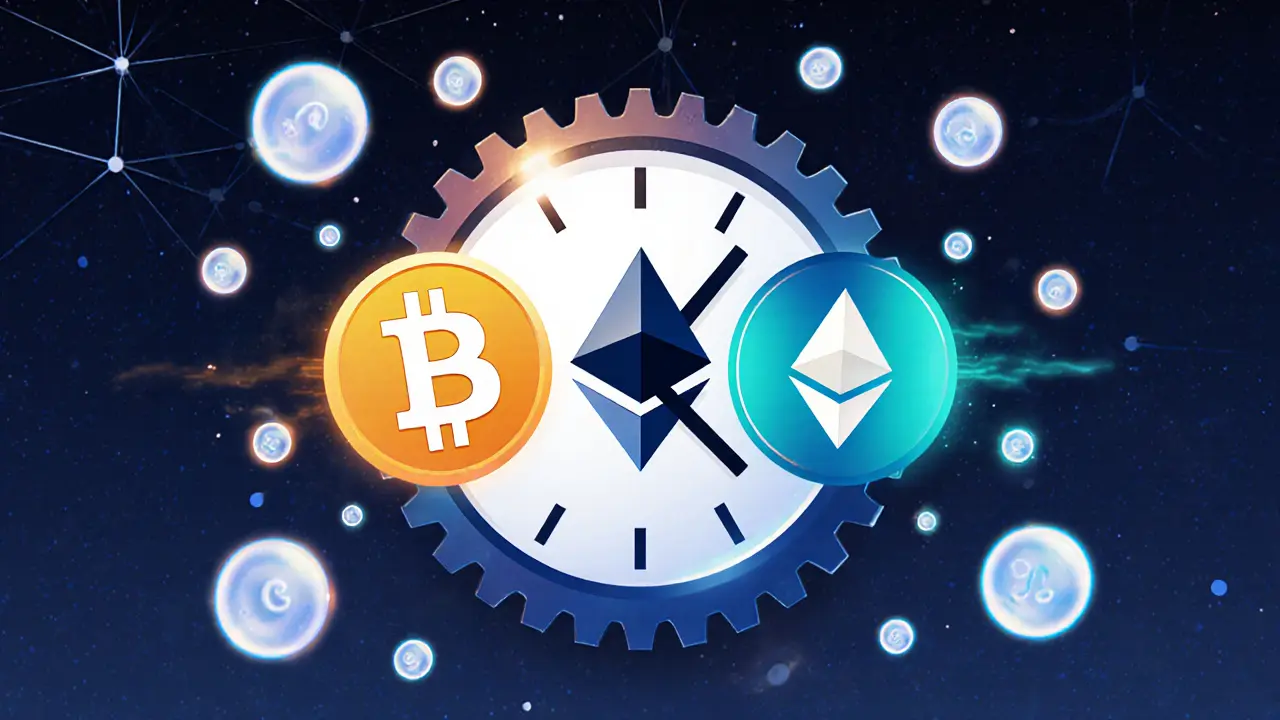Bitcoin block time: How 10-minute intervals shape crypto markets and mining
When you send Bitcoin, it doesn’t instantly show up in the recipient’s wallet. That’s because Bitcoin block time, the fixed interval at which new blocks are added to the Bitcoin blockchain. Also known as block confirmation time, it’s the heartbeat of the entire network—set to 10 minutes by Satoshi Nakamoto and unchanged since 2009. This isn’t random. It’s a deliberate balance between security, decentralization, and speed. Too fast, and the network gets flooded with orphaned blocks. Too slow, and users wait too long for transactions to confirm.
This 10-minute cycle directly affects Bitcoin mining, the process where miners compete to solve complex math problems to validate transactions and earn new Bitcoin. Miners don’t just wait around—they race to solve the next block before anyone else. The reward? Currently 3.125 BTC, halved roughly every four years. That reward, combined with transaction fees, is what keeps miners running powerful machines 24/7. But here’s the catch: if blocks came too quickly, the reward would get diluted, and miners would lose incentive. If they came too slowly, the network would feel sluggish. The 10-minute target keeps this system stable.
It also shapes how blockchain confirmation time, how long users wait before a transaction is considered final. Most exchanges and services require at least 3 to 6 confirmations—meaning 30 to 60 minutes—before they credit your deposit. That’s why you can’t instantly buy something with Bitcoin like you would with a credit card. It’s not broken. It’s designed this way for security. Compare that to Ethereum, which confirms blocks in 12 seconds, or Solana at 400 milliseconds. Bitcoin’s slowness is its strength. It’s harder to reverse.
That 10-minute block time also influences how people trade and react to market news. If a big announcement drops, traders know it’ll take at least 10 minutes for the blockchain to reflect the first wave of activity. That delay creates a different kind of market rhythm—one where patience matters more than speed. It’s why Bitcoin often moves in waves, not spikes. And it’s why miners, not just traders, are watching the clock. When the next halving hits, or when fees rise, the block time stays the same—but the pressure on miners changes.
Underneath all this, Bitcoin block time is tied to something deeper: cryptocurrency consensus, the way thousands of computers agree on the state of the ledger without a central authority. Bitcoin’s Proof of Work mechanism relies on this timing to prevent double-spending and attacks. Other coins use different methods—Proof of Stake, for example—but Bitcoin’s 10-minute rule has held up for 15 years. No other network has matched its reliability.
What you’ll find in the posts below isn’t just theory. You’ll see how this 10-minute window affects real-world behavior—from underground crypto markets in Nigeria and Algeria, where people wait for confirmations to avoid detection, to how UAE traders time their moves around block confirmations to stay tax-compliant. You’ll see how airdrops like ONUS and FORWARD depend on blockchain timing, and why exchanges like Binance Liquid Swap and Nonkyc.io build their interfaces around these delays. This isn’t just about Bitcoin. It’s about how the rhythm of the blockchain shapes everything else.
What Is Block Time in Blockchain? Speed, Security, and Real-World Impact
Block time determines how fast transactions confirm on a blockchain. Bitcoin takes 10 minutes per block for security; Ethereum uses 12 seconds for DeFi; Solana hits under a second but risks outages. Learn how block time affects speed, safety, and real-world use.
read more

